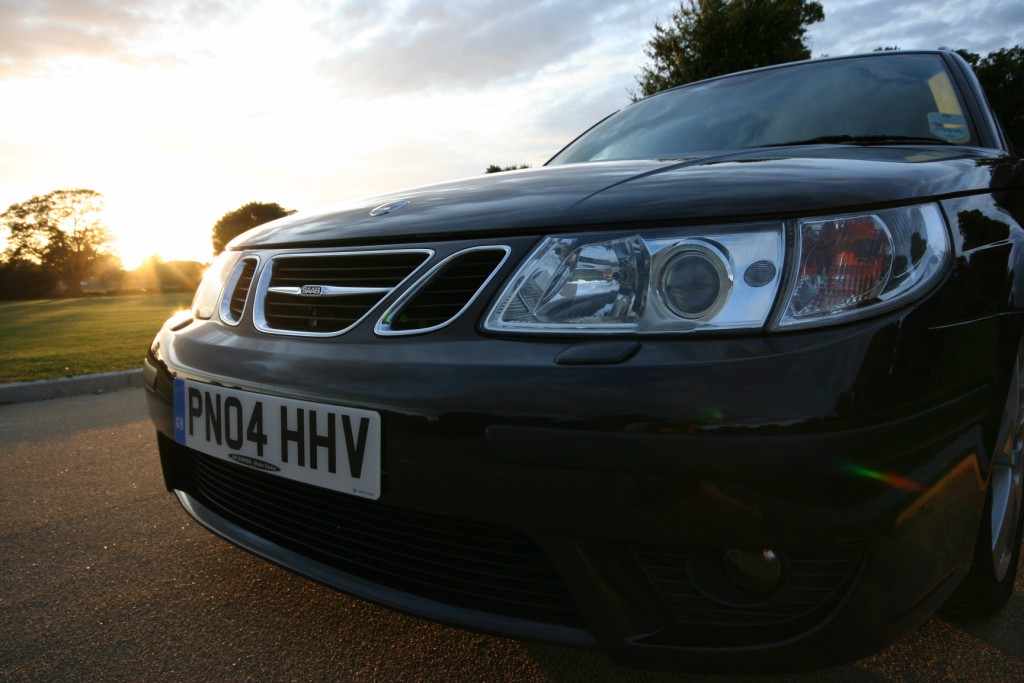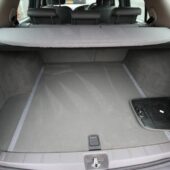Given that I’m selling my motorbike at the moment as well, you may well wonder if I’ve had some kind of financial crisis of my own.
But thankfully, no. I just don’t need such a large and fast car any more. When I was doing a lot of sprinting I needed something capable of towing a car trailer comfortably and reliably. But I also wanted something I could enjoy driving as my daily transport.
City Commuting Doesn’t Suit Big Cars
And that’s what happened, basically – for the past 18mths or so I’ve driven 12 miles to Liverpool city centre, and 12 miles back – congested roads, with a lot of stop-start action. In the end I bought a Golf TDI which makes much more sense for that kind of driving. Although I’m tempted to keep the Saab, which I will if I can’t get the right price, I know that in reality it’ll get far too little use in the coming year or two. The sensible decision, then, is to sell it.
So, here goes…
Specification
This is a 2004 (04 plate) 9-5 Aero HOT Estate with 250bhp. The full specification items worth listing are as follows:
Bi-Xenon headlights, headlight washers, factory alloy wheels, factory CD/Radio, Nokia Bluetooth Hands-Free (works with most phones), electric windows all round, electric mirrors, heated mirrors, split climate control, dual-colour leather seats, leather steering wheel, lots of airbags (5* NCAP Rating), ABS, Electronic Stability Program, new Vredestein Giugiaro front tyres and lots of life on the identical rears, detachable tow bar, FSH (main dealer or specialist only), two owners (first owner the dealership as it’s an ex-demo car), 58,000 miles, 10 months MOT, Tax until 10/09.
The car is in a gorgeous Capuccino Black. In other words, most of the time the car looks black or very dark grey, but when the sun shines on it you realise that there’s a pearlescent bronze finish. The photos below really capture this, which took some effort as it’s not easy to show in pictures – normally it just looks black.
Damage Worth Noting
I’m nothing if not thorough and feel it’s worth noting everything even if it’s minor so that you’re not disappointed if you travel – the car has a couple of tiny dings from the careless door opening of others. It has a small ding that’s almost but not quite invisible under the nearside rearmost window with a matching scrape on the bumper – that was a van in Paris that did it, and no, he didn’t leave details. But I’d say very few people can spot these marks – I’ve taken close-ups, however, to try and show marks. Also, one of the alloys has a barely visible kerb scrape on it. Picture shown. There’s a few minor and normal stone chips that could do with being dealt with by chipsaway or similar, but one left a tiny ding on the bonnet. Another tiny ding was caused by the biggest hailstorm I’ve ever seen, over in Italy. I expected worse….
Get in Touch – Price to be around £6200
If you’re interested, you can contact me through the contact form on this site, or simply call me, during office hours or in the evening on 0151 709 7977.
If you’re wondering whether someone with the word ‘mental’ in his website address and a history of motorsport will have taken care of his car… well, in racing if you don’t take care of your car you often end up with an accident at some point. Or losing. I apply the same philosophy to my road cars – look after them and they look after you.
Enjoy the gallery – simply click on a thumbnail to get the big version, and you can then move between images by clicking on the arrows that come up.
And a Deep Zoom Seadragon view of the under-bonnet area
And now, PhotoSynth
Yes, I may have been playing – I’d be interested to know what you think of this use of technology…
































